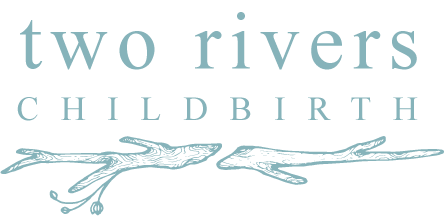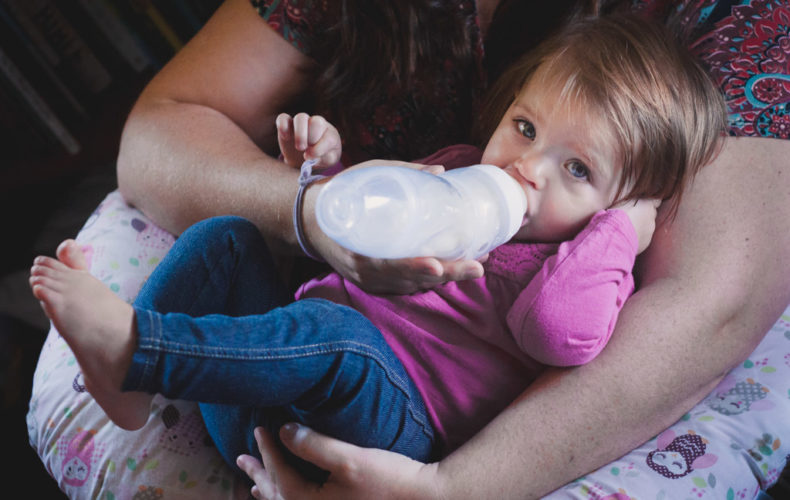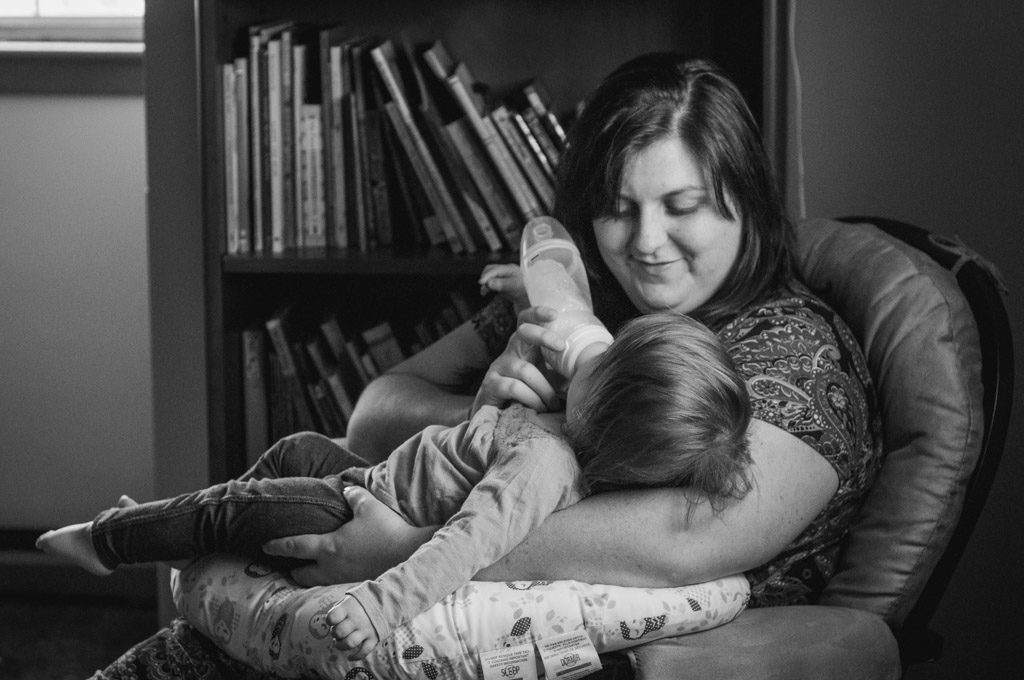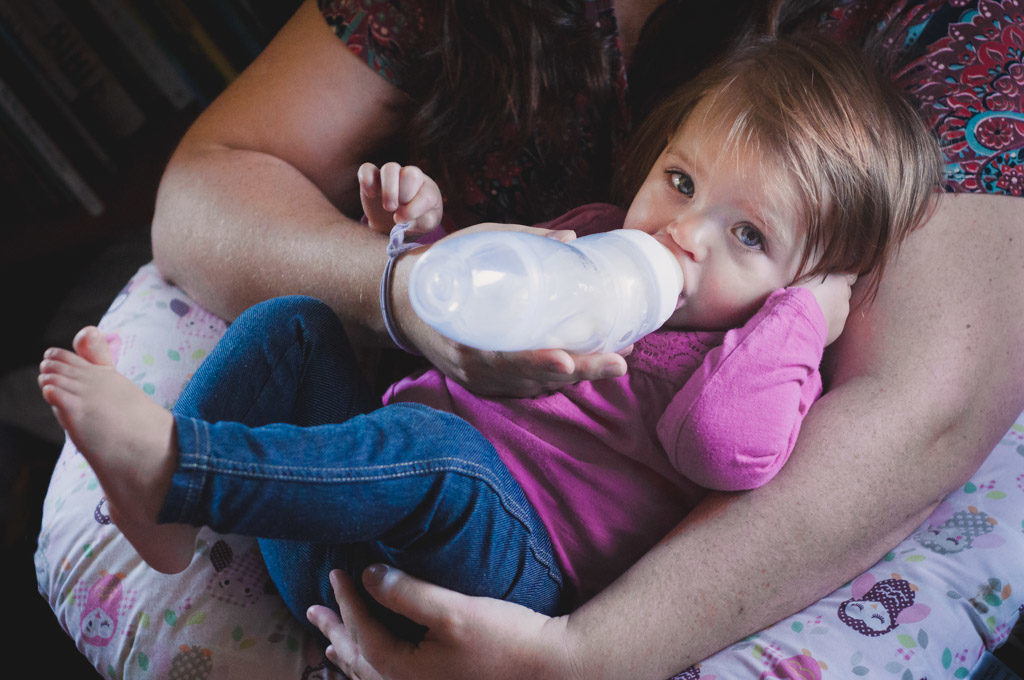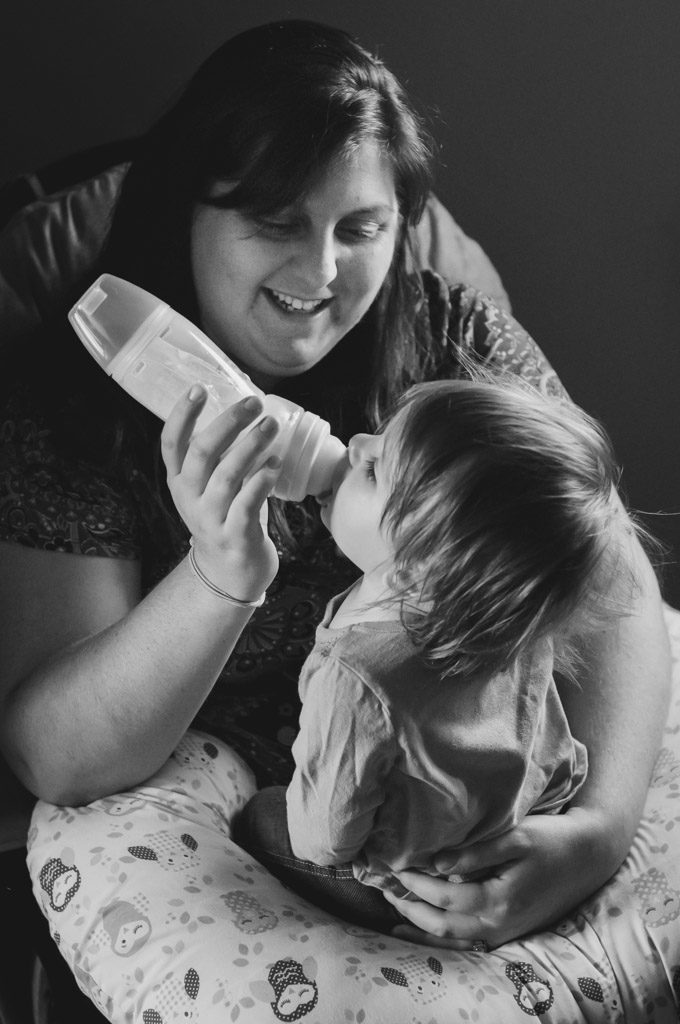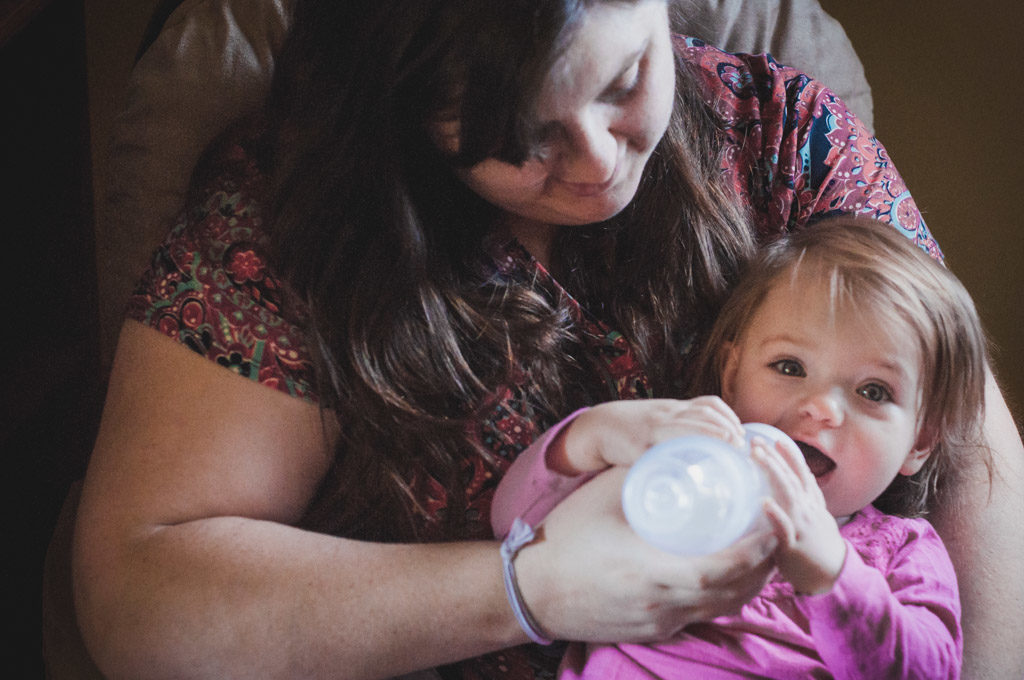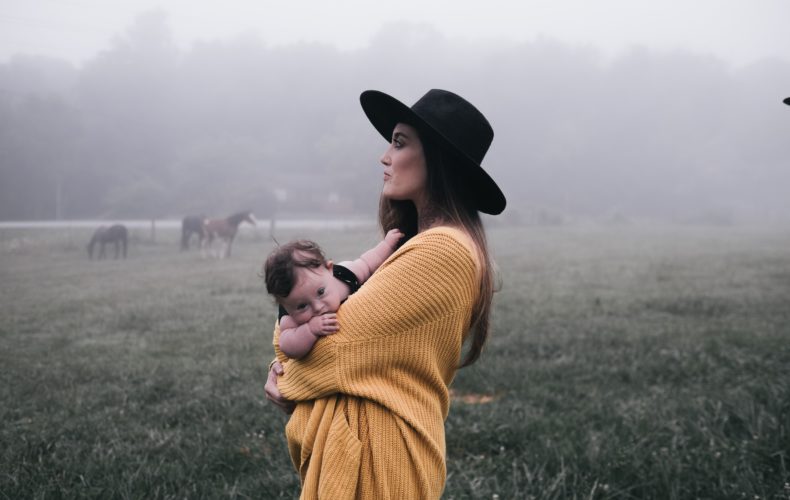As told by Kayla:
I pulled my last brick of breastmilk out of the deep freezer last night. There’s enough for 10 more bottles. I could have done my usual and prepped 4 bottles for today. That’s 3 for daycare and 1 for home. That would mean I’d only have two more bedtimes when we got to snuggle our little love and give her a bottle. I decided to not send any to daycare so I can extend our evening bottles for 10 more days. Ten sweet nights and then our nightly routine of quiet, no electronics, just us rocking would be done. I’d promised myself we would wean from the bottle when the breastmilk was gone. Now, here we were, at the end of the milk, and I’m not sure I feel ready.
Which kind of sums up my entire breastfeeding journey. I was a formula kid, as I think most kids born in the late 80s were. For a variety of reasons, including ease of going out and about, financial impact, and health benefits, I knew I wanted to breastfeed from the minute I found out I was pregnant. If I had to do formula, that was okay, because I TRULY believe that FED IS BEST and if I couldn’t breastfeed, then she would be just fine on formula.
Toward the end of my pregnancy, as I read more and more about latches and breastfeeding, I started to think I might have flat nipples. So I hired an IBCLC for a consult. She came over, confirmed that I did have flat nipples, and then we talked about how people could be successful despite anatomical challenges. I also asked for proper sizing on my pump flanges, but she had zero experience with the pump I was using and ended up not being terribly helpful in that regard.
Attempting to Direct Nurse
When Elizabeth was born, we had immediate skin to skin and an LC who came in to help us latch before I was even out of the delivery room. It didn’t really go super well, but we were hopeful it’d get easier. Throughout my hospital stay, I saw 3 different LCs, plus I had nurses helping me try to latch. I tried nipple shields. One LC even barged into our room to tell us that she heard the baby crying from the hall and that Elizabeth was starving and I needed to feed her. I tried, and tried, and tried.
Less than 48 hours after Elizabeth was born, my nipples were cracked and bleeding. But it wasn’t until the final LC came in and talked to me that I finally found the relief I needed. She was the first LC to look at Elizabeth and me and see that we couldn’t continue the way we were going. She told me to start supplementing with formula while we figured out the latch.
In the journal I was keeping at the time, I wrote,
“When I got home and tried to have her latch and my whole body tensed and I started crying from the pain, I finally gave myself permission to try something else and take care of myself. Elizabeth needs a mom, not a martyr. As long as she is fed, I’m doing my job well.”
We gave her formula. She was happy, and I wasn’t in pain. I called my best friend, who had exclusively pumped, to come over and show me how to use the pump. I cried in her arms for a bit as I overcame the feelings of failure for not being able to do “the most natural thing in the world.”
Another excerpt from my journal:
“I realized that the only times I was really holding her was when I was trying to feed her. Which was super painful and resulted in somewhat delayed bonding. I was starting to associate her with pain. It’s been better since I got a bit more selfish and snuggled her just to snuggle her. And also since I stopped forcing myself to breastfeed. I’m pumping and supplementing with formula, and my stress levels are so much lower. Life is good. :)”
That began my exclusive pumping journey. I did meet a few times with the IBCLC at our pediatrician, but between my flat nipples and Elizabeth’s lip tie, it just wasn’t working, and so I decided to exclusively pump.
Exclusively Pumping
When I started pumping, I was pumping 8 times per day- every 3 hours, the same as Elizabeth’s feeding schedule until she got back up to weight. I spent 4 hours every day hooked up to a machine for the first twelve weeks. I carried pump supplies with me everywhere. I didn’t leave the house with less than three bags – diaper bag, bottle bag/cooler for milk, and pump bag.
EPing was a huge learning curve. I relied heavily on my BFF, the ONLY other person I knew who had EP’d, and she introduced me to an amazing Facebook group of EPers where we could ask questions, commiserate, and get tips and tricks.
I had to learn what a let down looked like/felt like. I started timing the amount of time after my last letdown to make sure I was pumping for 5 extra minutes after the let down so I could boost my supply. I drank blue Gatorade. A wonderful friend sent lactation cookies. I drank cardamom Mother’s Milk tea. I figured out that coconut oil is an amazing salve, and that lanolin stains sheets. I learned how to sleep in 2.5 hour stretches.
The first time I figured out to cut holes in a sports bra to hold the pumps in place was a revelation. I had hands again! Pumping time became time that I could also feed Elizabeth or read on my nook, or just relax. It sounds crazy, but when you’re used to it, it becomes routine and I even fell asleep attached to the pump a few times. Thank goodness I had a Spectra and it automatically would shut off!
After 12 weeks, your supply is pretty well established, so that was when I started dropping pumps. When I went back to work, I was pumping as soon as I got up, three times at work, on my drive home, and then twice more at home in the evening. Some nights I was up until midnight to fit in the 7th pump. I dropped to 6 pretty quickly. Then, 5, and held steady there for a while. Probably around the 6 month mark, I dropped to 4 – wake up, 2 times at work, and before bed. I didn’t go below 4 pumps because I saw my supply drop. Then, 9.5 months after Elizabeth was born, I hung up my pump parts for last time. I had enough milk in the freezer to get her to 12 months. 2400 ounces. All told, I estimate that I pumped between 10,000 and 12,000 oz of breastmilk.
Pros and Cons
As with everything in life, there are pros and cons to exclusively pumping. I thought I’d list out some of my personal pros and cons.
| Pros | Cons |
|
|
Products I Used
These are some of the products I used that worked well for me:
Spectra S2 – my at work pump, since it needs to be plugged in and I was at a desk
Spectra S1 – my at home pump – a rechargeable battery = mobility!
Freemies – I can’t recommend these when you first start pumping because they fog and it’s hard to ensure you have the right placement, but once you have the hang of it, I think they’re great, and make it so much easier to pump in front of guests.
Lactamed Simplicity Hands Free Bra – so simple, and easily worn over your maternity bra
Palmer’s Cocoa Butter – magically healing and smells like chocolate!
Coconut Oil – lubes flanges well to prevent friction
31 Bag – stored all my crap and looked cute.
Car adapter for my Spectra
Ibuprofen – decreasing swelling to help clear clogs to prevent mastitis
Sunflower Lecithin – thins the milk to help clear clogs to prevent mastitis
Lactation Cookies
Mother’s Milk Cardamom Tea
Blue Gatorade
In Conclusion
Exclusively pumping was one of the hardest things I’ve ever done. I don’t regret it, and there are aspects (like the built in excuse to go binge on Netflix during family events) that I do miss as we enter this holiday season. My breastfeeding journey may not be the storybook direct nursing experience I had thought I wanted, but EPing was a curveball I ended up being thankful for.
More about the LIFE AFTER BIRTH PROJECT
More about the BIRTH STORIES PROJECT
More weaning stories at the LAST LATCH PROJECT
